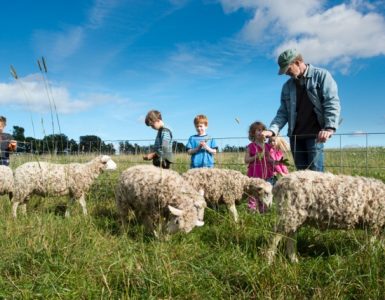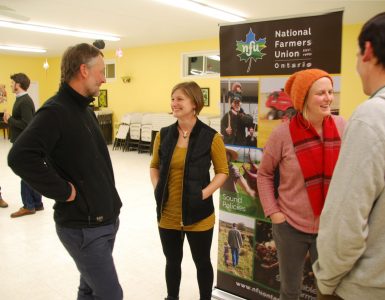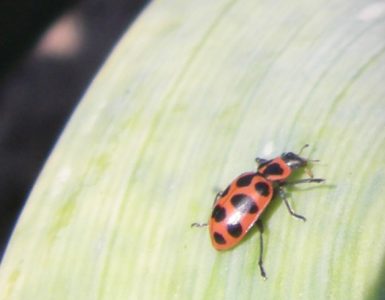This is been a record-breaking year for farmers, and not in a good way.
Globally, the past year has been the hottest year ever recorded. Indeed, each month on Earth has been hotter than the last; June was the fourteenth consecutive record-breaking month. The data from July isn’t available yet, but we have every reason to expect it will continue the trend.
In Ontario we’ve seen record-breaking drought. Several parts of Ontario, including Kingston and areas east of it, saw their lowest precipitation ever recorded for April through June. And things did not improve in July.

You can see it in our fields. You can see it in our dry pastures, in which grass goes yellow and stops growing. You can see it in the dust the cows kick up as they walk to the very back of the farm to reach pasture which hasn’t been grazed yet.
You can see worry in the faces of farmers. Plants are stressed, farmers are stressed. This summer I’ve found myself thinking about the Dust Bowl on many a hot afternoon.
Our vegetable gardens—irrigated to the maximum capacity of our water system—look green compared to the pastures. Our vegetable yields are good, considering. That’s in large part because my partner Emily is such a careful planner, and because our staff are so hard working.
Still, this weather is only a glimpse of the climate change to come.
The hot, dry weather is shocking a contrast to February 16 of this year, which social media dubbed “snowmageddon”. On that day we saw record-breaking snowfall in parts of Eastern Ontario. Ottawa received nearly half a metre, smashing the single-day record set in 1947.
We had it, too; on our farm, the sudden wet snowfall crushed our only greenhouse, snapping strong metal ribs into pieces. The engineers who designed our greenhouse did not anticipate the rapid onset of climate change, did not anticipate the many ways farming is being forced to change.
My family drove 12 hours to come and help us rebuild. We replaced the greenhouse frame with something twice as strong. We were fortunate to have family support, to be able to afford to replace that infrastructure.
Around the world, most people are not so lucky. It’s the inequality of climate change; we in the wealthiest parts of the world, who release the most greenhouse gases, are also best able to adapt. The small farmers and peasants who produce most of the world’s food, on the other hand, have the fewest material resources to cope with global warming.
And the problem of global warming is not limited to rural areas. Sea level at New York City has already increased by a full foot versus a century ago. Sea level there is expected to increase another foot in the next fifteen years, along with higher storm surges and more intense hurricanes.
Too often, climate change is framed as something gradual that our grandchildren will have to worry about. This attitude is not just a simple misconception, but also the result of ongoing PR campaigns.
It was recently revealed that the oil and gas industry has known about climate change for nearly 50 years. But—much like the tobacco industry did in the 1970s—they’ve funded groups to deny or cast doubt on the reality of climate change.
These well-funded groups have laid siege to climate scientists, inducing many climate scientists to release only conservative models, predicting smaller amounts of climate change to avoid charges of “alarmism.”
But we should be alarmed; we are well on course for the future that climate reports a decade ago called “the worst case scenario.”
The problem—as we have seen this year—is not just the increase in degrees, but the increase in extremes. A year that can crush our greenhouse with record snowfall, and then give us record drought six months later. It’s easy to see why some people prefer the term “climate chaos” over the more mundane “climate change”.
In any case, it’s just the beginning. But it’s the time to act. Changes now can still make a difference.
It’s certainly good to support sustainable farms and local infrastructure for climate change adaptation. But we can’t adapt to climate change at its worst.
We need to reduce our greenhouse gas emissions dramatically.
The question is: How fast can we do it? That’s the only climate record we should be trying to break.







